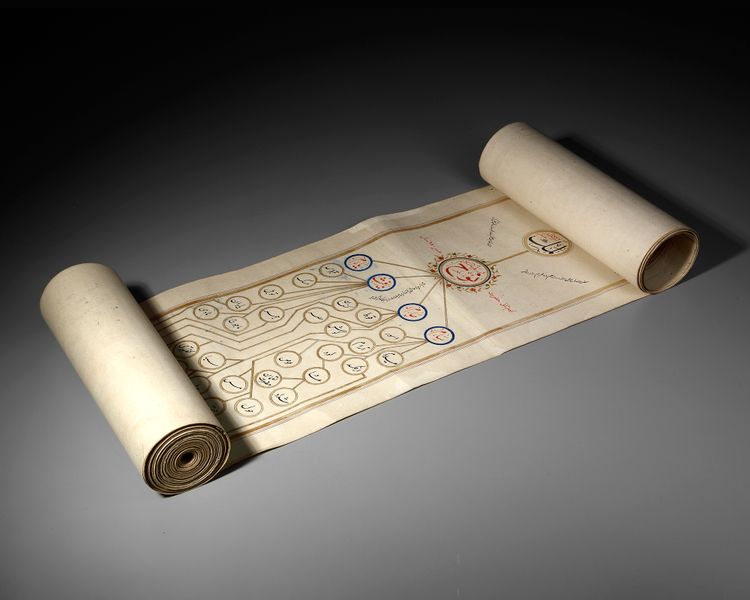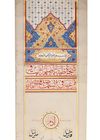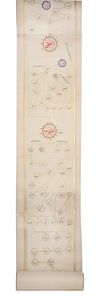Lot 178 A LARGE OTTOMAN GENEALOGICAL SCROLL (SILSILENAME), TURKEY, 18TH CENTURY
Arabic and Ottoman manuscript on paper, written in naskh, thuluth and nastaliq script in red and black ink, with the names within gold roundels outlined in black, illuminated headpiece with blue, red and royal gold decoration enclosing Al-Basmallah in black naskh script.
21 m by 27 cm.
Genealogical manuscripts (silsilename) in the form of a scroll or a book were popular in the Ottoman period. Although generally classed as genealogies they in fact do not function strictly as such. Silsilename were very popular in Ottoman Turkey, listing rulers and religious leaders and their line of descent. This particular example is a silsilename of the Prophets commences with Adam through Noah, Abraham, Solomon etc.., tracing the lineage through the Prophet of Islam, the well-know figures of Quraysh tribe, the lineage of the prophet and his wives, the four Rashidun caliphs and their children like Hasan and Hussain. 2100 by 27 cm









